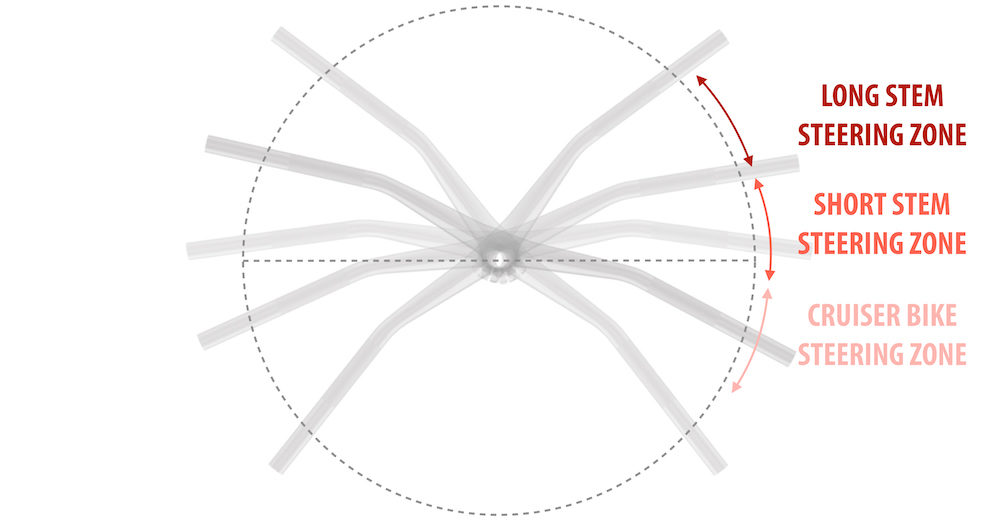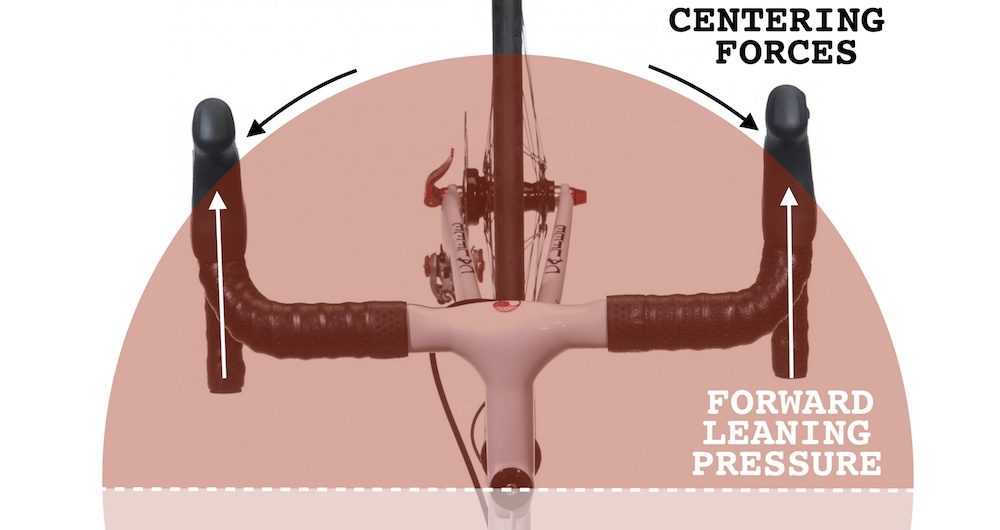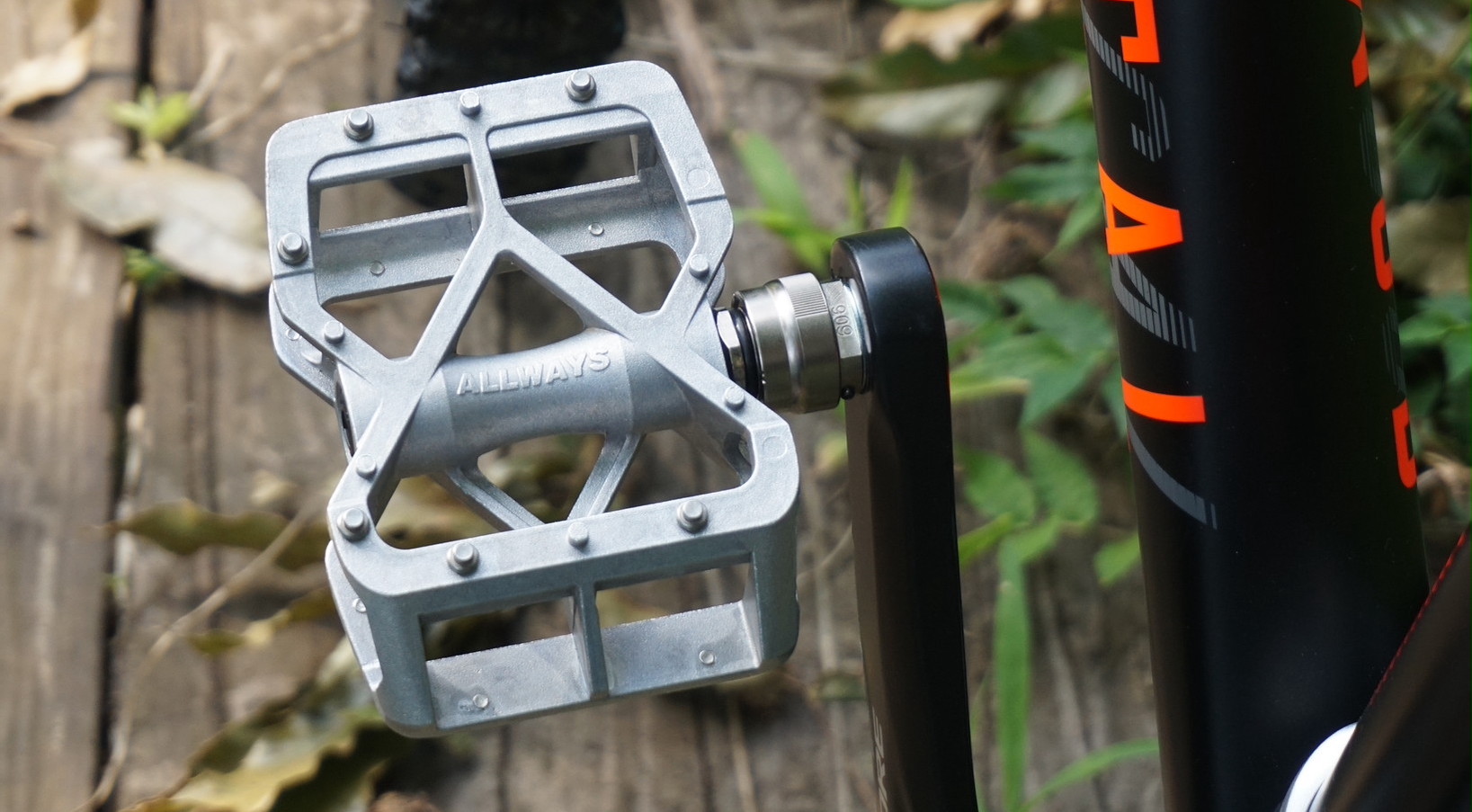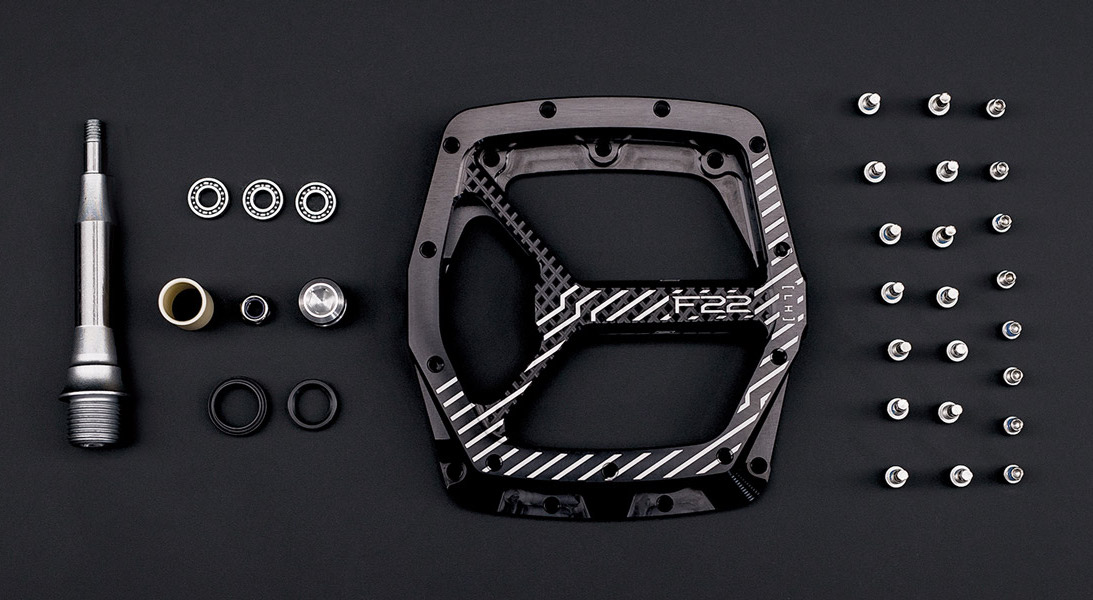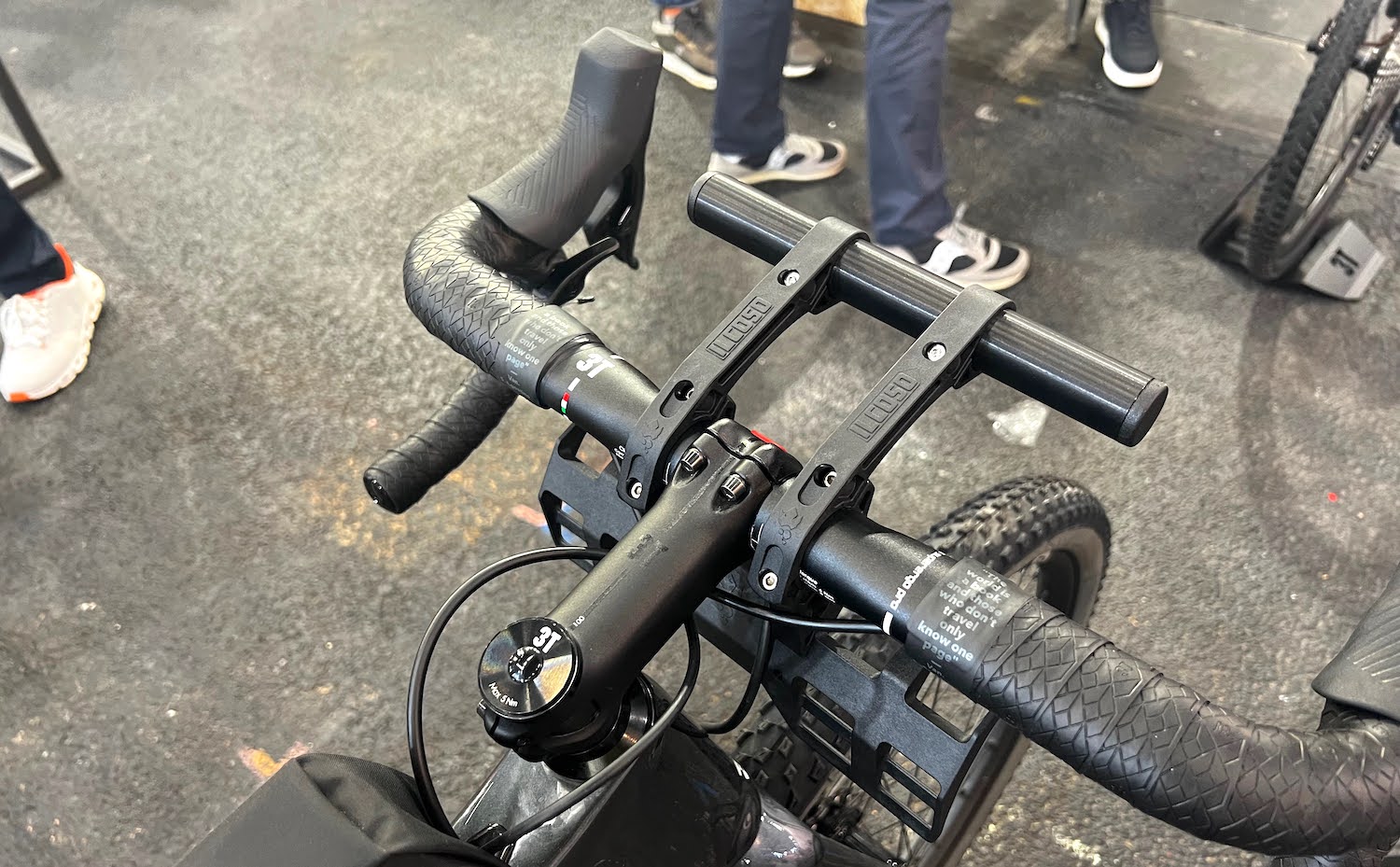Table of Contents
These bike stems look insane. Seriously, a 0mm stem length? Have Analog Cycles gone completely mad???
According to Analog Cycles, the 0mm Discord Creemee stem helps riders to achieve a higher and shorter cockpit than typical, and there is no doubt about that.
But what about the twitchiness of the steering?
After experimenting with zero millimetre bike stems for a while, the guys at Analog Cycles say the difference in twitchiness is negligible.
Today, we’re going to run the numbers and find out how short bike stems affect steering twitchiness, and I think you’ll be really surprised by the results.
But first, let’s dive deep into the role of bike stems.
Stem Length: Just One Part Of A Steering System
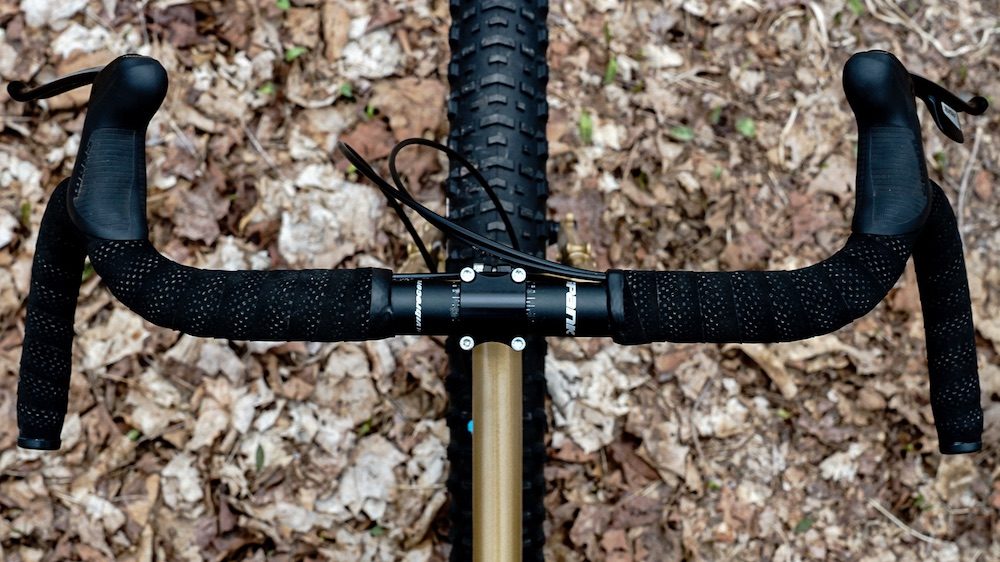
The stem on a bicycle is part of a steering system, and there are many aspects that affect the steering “feel”. These include your handlebar design, head tube angle, fork offset, trail, tyre width, and whether you’re carrying any luggage on the front of your bike.
Arguably, the most important feature of a stem is that it positions your body in an optimised location between the wheels for the type of riding you do. That’s going to be different depending on the purpose of your bike. I recently discussed the optimal weight distribution in my Frame Geometry Masterclass – check it out HERE.
In short, bicycle fit is key here, and different frames have been optimised for a somewhat narrow range of handlebar widths and stem lengths.
Steering Characteristics

When we isolate other variables, there are three different measurements at the cockpit that tell us the most information about how the steering will feel.
The first is the width of your hands from the steering axis. The wider this distance is, the more steering leverage you will achieve, requiring less upper body force to change the direction of your bike. Steering leverage is particularly important for a bike with front luggage, as it will help you move multiple kilograms around the steering arc.
The second is the distance your hands need to move when turning your bars. The shorter this displacement is, the more ‘twitchy’ your steering will become. This just means that less steering input is required to change the direction of your bike. The downside to having more steering input or ‘twitchiness’ is that forces acting on the wheel on the ground will have a greater effect on your handlebars. That said, a higher amount of steering leverage minimises this effect, so it’s only really a problem with narrow bars.
And the third is the location of your hands on the steering arc.
Steering Zones
Different bikes have different steering zones. These zones are the section of the steering arc that your hands travel along when changing the direction of your bike.
It’s hard to definitively place an ideal steering zone because that depends on all of the other aspects of steering (eg. handlebar width, steering trail, luggage, the intended use of the bike etc).
On most bikes, we want our hands to travel in the upper half of the steering arc, in front of the steering axis.
This is because we apply a forward force to our grips when we ride. Steering in the upper half of this arc allows our bars to self-centre as we’re always working against this forward pressure when we turn our bars. This self-centring is particularly important when you’re slowing down, as a bike that cannot self-centre under braking will pull the front wheel to the left or right.
In comparison, the lower half of the steering arc works with your forward grip force, resulting in less steering stability. A cruiser or Dutch bike is an example of a bike that steers in this steering zone, but given there is very little forward force on the grips, these bikes usually handle just fine.
However, it’s worth noting that the steering zones on these bikes are more a function of the overall bike design.
Long Stem vs Short Stem Stabilization
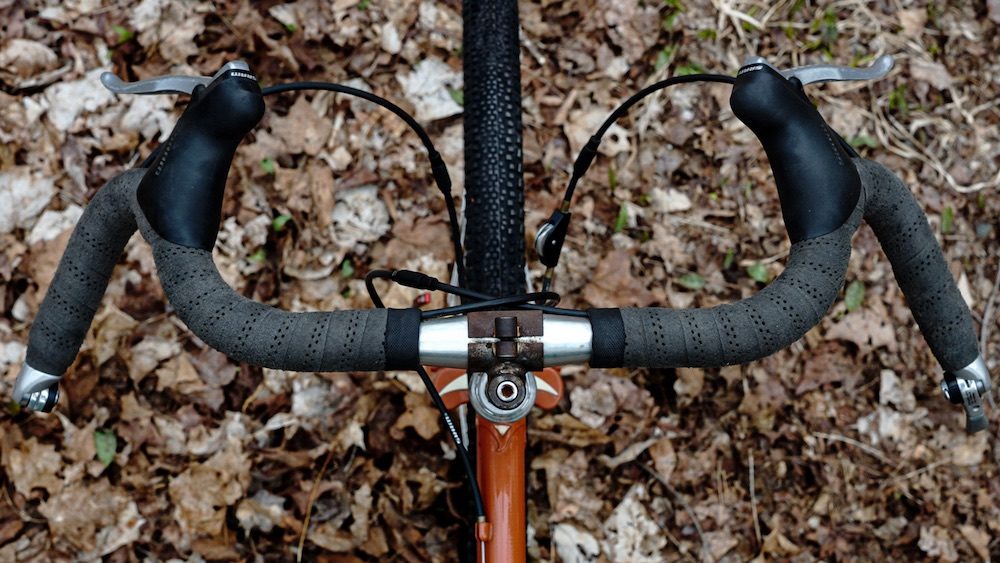
A shorter stem offers a more ‘direct’ or ‘neutral’ steering, as there is less left-to-right movement along the steering arc. This is nice because you can be a bit more intentional with the location of your centre of mass.
The downside is that forces coming from the ground have a larger effect on the steering. That said, adding steering leverage to a bike by fitting wider handlebars will counter most of these forces.
In comparison, a longer stem offers more side-to-side movement on the steering arc. The result is more stabilization from ground forces – which is usually better with narrow handlebar bikes on softer surfaces like sand.
How Does Stem Length Affect Steering Speed?
I’ve run the displacement numbers on five different handlebars (to the centre point of your hand) to see how stem lengths change the ‘twitchiness’ of a bike. For the sake of today’s exercise, we’re going to assume that the reach to your handlebars from your seat is the same for a 0mm, 50mm, and 100mm stem. This is technically possible by increasing the reach of a bicycle frame in accordance with the reducing stem lengths.
1. Turn a Ritchey Venturemax 44cm drop bar 20 degrees, your hands will move:
– 9.8cm with a 100mm stem
– 8.8cm with a 50mm stem (10.2% more twitchy)
– 8.1cm with a 0mm stem (17.3% more twitchy)
2. To turn a Ritchey Venturemax XL drop bar 20 degrees, your hands will move:
– 10.9cm with a 100mm stem
– 10cm with a 50mm stem (8.3% more twitchy)
– 9.4cm with a 0mm stem (13.8% more twitchy)
3. Turn a Curve Walmer 60cm drop bar 20 degrees, your hands will move:
– 11.8cm with a 100mm stem
– 11.1cm with a 50mm stem (5.9% more twitchy)
– 10.6cm with a 0mm stem (10.2% more twitchy)
4. Turn a Ritchey Comp 710mm flat bar 20 degrees, your hands will move:
– 10.47cm with a 100mm stem
– 10.14cm with a 50mm stem (3.2% more twitchy)
– 10.09cm with a 0mm stem (3.6% more twitchy)
5. Turn a KOGA Denham Bar 20 degrees, your hands will move:
– 11.32cm with a 0mm stem
– 10.94cm with a 50mm stem (0.9% more twitchy)
– 10.84cm with a 100mm stem (4.2% more twitchy)
Analysis
Ok, let’s make sense of these numbers.
When using narrow handlebars with a short stem, there will be much bigger changes to the twitchiness of the steering than if you use wide handlebars. The extreme case of switching from a 100mm stem to a 0mm stem on a 44cm wide handlebar will result in 17% more twitchiness, which is a lot. But if you’re switching from a 50mm to a 0mm stem on a flat bar bike, the difference will be almost impossible to detect (<1%).
In general, I suspect a displacement difference of less than 5% will likely go unnoticed. But when you climb into the double digits, that’s when the twitchiness of an ultra-short stem will become obvious.
Note: The sweptback nature of the KOGA Denham Bar results in negative effective stem lengths using 50mm and 0mm bike stems. That means that a 100mm stem is actually more twitchy than a 0mm in this case because it puts your hands closer to the steering axis!
Who Needs A Zero Millimetre Stem?
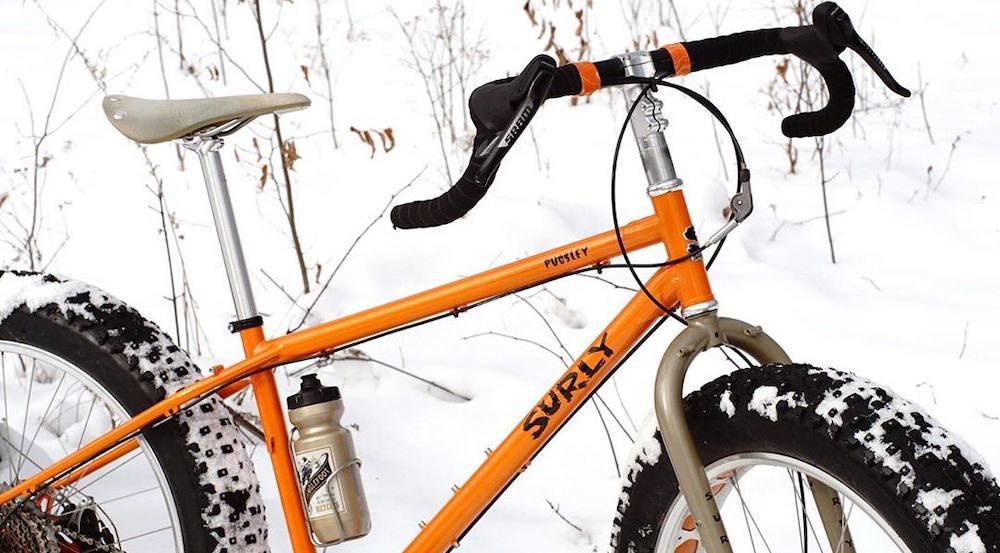
A zero millimetre stem is going to be best used on a bike with:
(1) slow steering characteristics (ie. high trail), and;
(2) a handlebar with very little backsweep (as it puts your hands a long way behind the steering axis) – in other words, pair it with wide drop bars or an alt bar like the forward-reaching Surly Moloko, rather than my sweptback KOGA Denham Bars.
A good use case might be a mountain bike frame paired with wide drop bars like the photo above. Mountain bikes already have slow steering (high trail) so the slight increase in twitchiness will be largely offset. Mountain bike frames are also 50mm+ longer than a drop bar frame, so a zero millimetre stem will help claw back some of this reach.
Another use case might be to achieve a more upright bike fit on your current bike. The Discord Creemee stem will increase the stack by 80mm along with bringing the bars closer to your body. As long as you’re already using a wide handlebar, this short stem will not change the twitchiness of your steering by a whole lot.
Summary
If you switch from a 50mm-to-0mm stem, you’ll probably not notice any twitchiness difference using a flat or riser bar, but you will notice the extra twitchiness with narrower drop bars.
That said, bikes have been designed around an intended use, which is optimised around bike stems in a certain length range. I first and foremost recommend finding a bike that is the right fit so you can match the stem length with the rest of the steering characteristics.
If you’re looking to ‘hack’ a bike that’s technically too long, fit drop bars to a mountain bike, or achieve a shorter and higher handlebar set up – a short stem is not as crazy as it sounds. Preferably you would pair the short stem with a wide handlebar with more leverage to reduce the impact of the forces coming from the front wheel.
Also, make sure your hands are in front of the steering axis to take advantage of the extra stabilization of steering in the upper half of the steering arc.
Learn All About The Basics of Frame Geometry HERE


